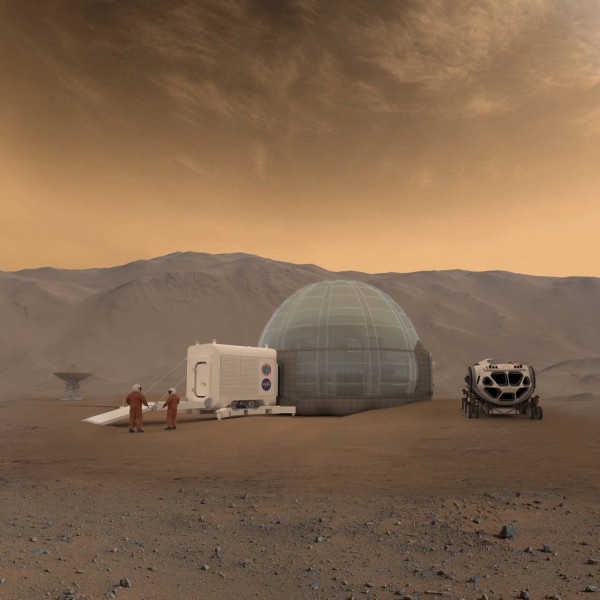By Ana Verayo, | January 03, 2017

An artist's rendering of the Mars Ice Home concept. (NASA/Clouds AO/SEArch)
NASA has revealed the first design concept for a future home on Mars. Researchers say that the best material to build these houses is apparently, ice.
When astronauts arrive on Mars, their mission could last for weeks instead of days, and they will require shelter during their stay to protect them from harmful radiation and harsh Martian environment.
Like Us on Facebook
Scientists, architects, and designers came up with this innovative concept at NASA's Langley Research Center in Virginia. The concept can be simply described as a "Mars ice home."
"We have identified needs, goals and constraints and assessed many ideas including out of the box ones and finally converged them into this ice home design, providing a sound engineering solution," said Kevin Vipavetz, senior systems engineer at NASA's Langley Research Center.
NASA scientists describe this dome as a large inflatable torus shaped like an inner tube and surrounded by an ice shell.
Apart from being encased in a water ice shell, this Mars shelter would be made of protective material to shield astronauts from cosmic rays and radiation. An underground habitat is the most effective protection. However, this would mean that heavy robotic equipment will be transported to Mars which can be burdensome.
According to physicist Sheila Ann Thibeault of the NASA Langley Research Center, this kind of material that can protect this Mars ice home will have to last many years in the harsh Martian environment since the ice house will be exposed to radiation such as ultraviolet radiation, atomic oxygen, perchlorates, and even dust storms.
The challenge here is that this ice home should be able to protect humans from all of these harmful elements but still allow light to pass through.
"The materials we have selected are all translucent which means that daylight from outside can still pass through and make you feel like you're inside a home and not a cave," said Kevin Kempton of NASA's Langley's Engineering Design Studio.
The team also revealed that when a considerable amount of water is detected and extracted from the surface of Mars, the astronauts could use the design to build a home completely covered in ice in 400 days.
-
Use of Coronavirus Pandemic Drones Raises Privacy Concerns: Drones Spread Fear, Local Officials Say

-
Coronavirus Hampers The Delivery Of Lockheed Martin F-35 Stealth Fighters For 2020

-
Instagram Speeds Up Plans to Add Account Memorialization Feature Due to COVID-19 Deaths

-
NASA: Perseverance Plans to Bring 'Mars Rock' to Earth in 2031

-
600 Dead And 3,000 In The Hospital as Iranians Believed Drinking High-Concentrations of Alcohol Can Cure The Coronavirus

-
600 Dead And 3,000 In The Hospital as Iranians Believed Drinking High-Concentrations of Alcohol Can Cure The Coronavirus

-
COVID-19: Doctors, Nurses Use Virtual Reality to Learn New Skills in Treating Coronavirus Patients







